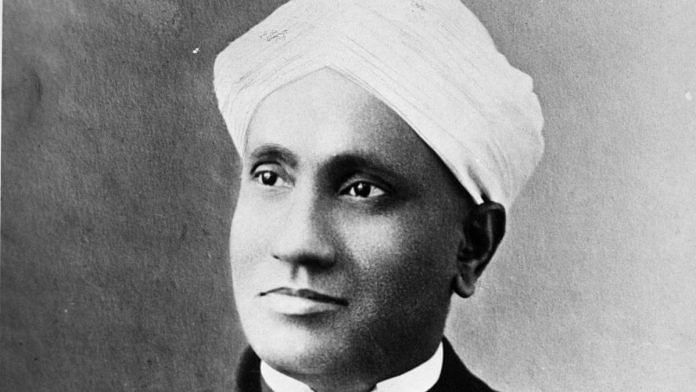CV Raman made the ground-breaking discovery called Raman Effect — the change in wavelength of light that occurs when a light beam is deflected by molecules.
New Delhi: Sir C.V. Raman may have been a great physicist of his time, but not much is known about his life beyond science.
Chandrasekhara Venkata Raman was known for his ground-breaking discovery of what is known as Raman Effect — the change in the wavelength of light that occurs when a light beam is deflected by molecules.
He won the Nobel Prize in physics for this discovery in 1930 and became the first Asian to receive the prize in the field of science. He was 42 at that time.
Also read: Mumbai physicist who devised mathematical way to define Einstein prediction wins top prize
Early life
Born in Thiruvanaikovil, Tamil Nadu, on 7 November 1888, Raman started taking interest in physics from a very young age. His father was a lecturer in physics and mathematics.
Being a child prodigy, Raman passed his matriculation at the age of 11, securing a first class, and then received a scholarship after passing his intermediate exam at the age of 13. He completed his graduation from the University of Madras with a gold medal in 1904. Then he earned an MSc degree with the highest distinction from the same university in 1907.
Raman, who was fond of Indian classical music, took great interest in acoustics of stringed instruments such as veena and tanpura. He also studied the violin in great detail and constructed a mechanical violin.
One of Raman’s discoveries includes the relation between frequency response of the violin and its quality. The frequency response curve is called ‘Raman curve’.
Also read: These ‘green’ crackers will reduce pollution & risk on Diwali without dimming the fun
Conflict with Nehru
It is said Raman used to resent then Prime Minister Jawaharlal Nehru for his take on science. He objected to Nehru’s policy of prioritising research only in state-owned institutes such as Atomic Research Establishment at Trombay, Mumbai, and the Council of Scientific and Industrial Research Laboratories, while universities were left to fend for themselves.
It is said Raman was so upset with Nehru’s policies that he smashed the Bharat Ratna medallion, India’s highest civilian award that he won in 1954 with a hammer.
Raman collaborated with his student K.S. Krishnan in his scientific experiments and together they coined term the Raman Effect. However, Krishnan’s contribution to this discovery that earned Raman a Nobel Prize was rarely acknowledged.
Raman’s collaboration with Krishnan was said to have angered other scientists such as Meghnad Saha who was believed to be vying for the position Krishnan was occupying.
Raman was appointed the first Palit Professor of Physics at the University of Calcutta in 1917. In 1932, he quit this job and joined the Indian Institute of Science in Bangalore (now Bengaluru) as the head of department of physics.
In 1948, he became the director of Raman Research Institute in Bangalore, a position he occupied until his death on 21 November 1970.
Among the various awards and honours conferred upon him included a knighthood by the Royal Society, London (1929), Lenin Peace Prize (1957), Franklin Medal (1941), among others.



